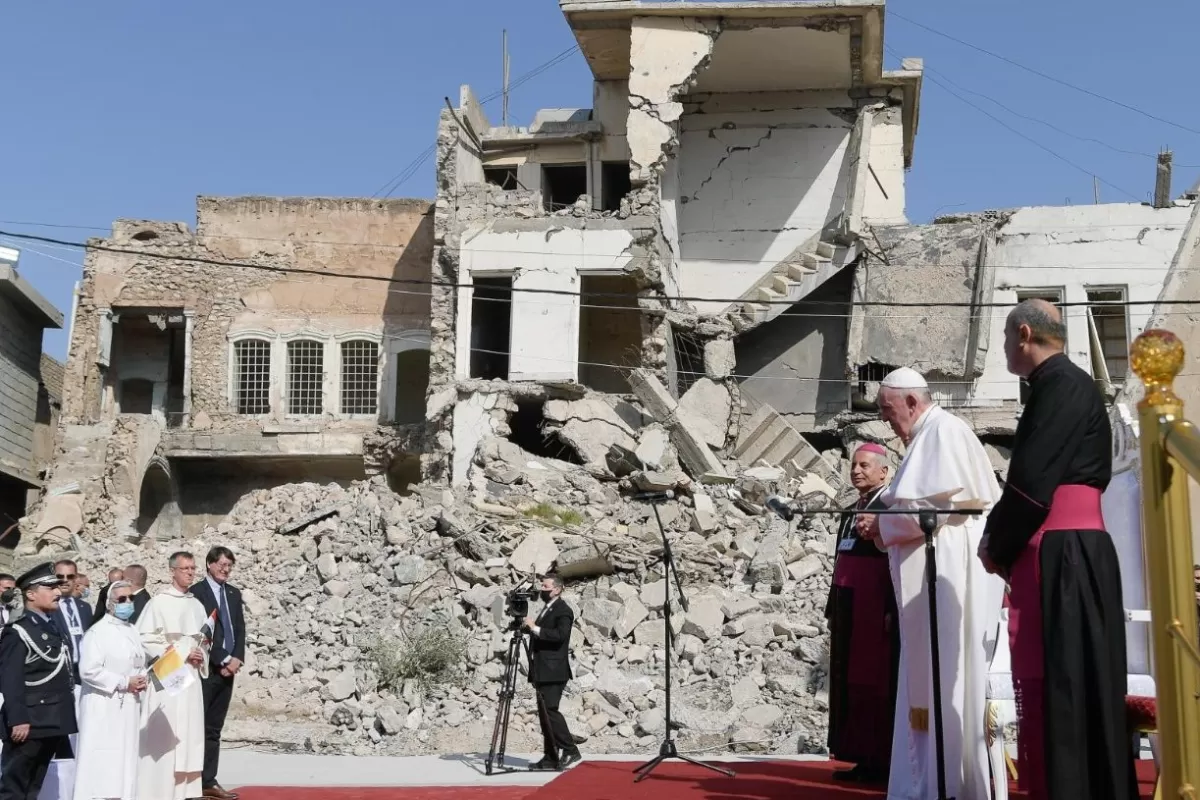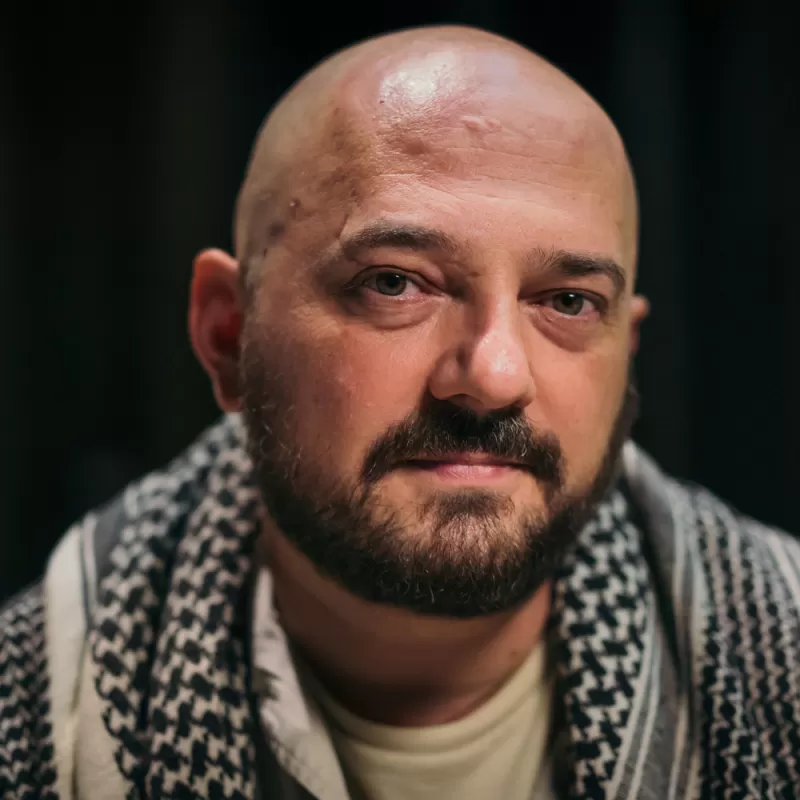
For the first time in history, a Pope has visited Iraq, the very place where the Bible tells us the world began, following in the footsteps of the patriarchs and prophets of the Old Testament. Steeped in symbolism and emotion, the visit was a landmark of historic consequence through its sheer novelty. The question is – will it truly make a difference?
Christians among the ruins of the Garden of Eden
This was the Pope’s first visit in the last 16 months, also his most dangerous since he was elected Pope. Security risks in Iraq remain significant, considering there are still active cells of the Islamic State in this country. Tensions run high amidst frequent skirmishes between American and Shiite militias. The airport where the Pontiff landed had been the target of a missile attack a few weeks prior to the visit. So was the Green Zone, the venue Pope Francis chose to meet up with Iraqi officials. Aside from security risks, there were also concerns over the epidemiological developments in Iraq – the Vatican official who came to prepare the Pope’s visit actually got infected with SARS-CoV-2. It’s difficult to impose social distancing in a country like Iraq. This is exactly what happened with the flocked in great numbers to greet the Pope, many of them not wearing face masks. As the Pope confessed during his flight back from Iraq, he had been aware of the risks entailed by this particular visit, which he described as the most tiresome he ever undertook. Yet, at the end of a long process of reflection and prayer, he decided it was too important to cancel.
The present-day territory of Iraq is one of the actual bedrocks of early Christianity. In the early days, it used to be a major hub of the Eastern Church and Nestorianism. As a matter of fact, long before the advent of Christianity, Mesopotamia was the home of highly important landmarks of the Jewish faith. After the Palestine of the Bible, Mesopotamia is probably the most important land referenced in the Old Testament, whose authors seem to have borrowed several Sumerian myths, the best-known of which being the Flood. The Tigris and the Euphrates, which surround the Garden of Eden in the Bible, are still there (25 years ago I actually saw a withered tree located at the junction of the two rivers, which the locals say was the proverbial Tree of Life). Mesopotamia is also tied to the legend of the Tower of Babel, which was most likely inspired by a ziggurats of the Sumeriansm like the Great Ziggurat of Ur. Babylon and the Assyrian Empire were integral to Mesopotamia, and are equally mentioned in the Bible. Finally, the city of Mosul used to be the home of the alleged tomb of the prophet Jonah in the Old Testament, which the Islamic State reportedly destroyed.
With the advent of Islam, Christians and Jews continued to live in the area, being tolerated as “peoples of the Book”, mentioned in the Qur'an. Admittedly, they were regarded as second-rate citizens of the various Muslim empires that ruled those lands: they had to pay special taxes, and if they ever had a dispute with a Muslim, this would be settled under the sharia. There were some cases of communities being persecuted, including in the 20th century, after the foundation of the Iraqi modern state: thousands of Assyrians were slaughtered by the Royal Army at Simele in the 1930s. With the secularization and modernization of Iraq, boosted to a great extent by Saddam Hussein’s Ba’ath Party as well, Christians didn’t experience too much trouble. Many of them were now educated and owned lucrative businesses (Armenian Christians, for instance, owned a large share of the gold market).
In the ‘90s, when Iraq started to suffer due to the embargo and the elites were leaving the country, Christians still accounted for a major community in Iraq, totaling some one and a half million people. They were mostly Arab, Armenian and Assyrian ethnics, some identifying themselves as Chaldeans or Nestorians. Baghdad was – and continues to be – the home of dozens of Christian churches. Christian women and girls proudly advocated their faith, wearing cross necklaces. One of the most important officials of the regime, Tariq Aziz, was Christian.
War broke out in 2003, and along with it the rise of Muslim extremism followed. Christians became targets for jihadis. 2004 saw the first coordinated attack against Christians, a wave of terrorist bomb attacks targeting churches in Baghdad and Mosul. Then came the campaign of 2008-2009 against the Christian communities in Mosul, forcing many of them out of their homes. In 2010, Chaldean Catholics were massacred in a church in Baghdad. In 2013, around Christmas, a new string of attacks followed, adding to persecutions of Christians in territories controlled by the Islamic State and countless other attacks on a smaller scale, such as the wave of assassinations of Christian alcohol peddlers. All these events have induced widespread panic, and any Christian able to flee Iraq did so. Today, a little under 300 thousand Christians are estimated to still live in Iraq.
Symbolic moments of a historic visit
For those Christians who did stay in Iraq, the Pope celebrated masses at the “Saint Joseph” Chaldean Catholic Church in Baghdad, as well as on the stadium in Erbil, the capital of the Kurdistan Region of Iraq, which has been spared most of the violence of the past two decades. After officiating the service in Erbil, the Pope met with the father of Alan Kurdi, the boy who became the symbol of the Syrian refugee crisis, and whose lifeless body had been photographed lying face-down on a beach in Turkey after the boat he was on capsized. A few hours earlier, Pope Francis had paid visits to Qaraqosh, a Christian enclave overrun by Daesh fighters in 2014 and abandoned by its inhabitants, as well as to Mosul, where he saw the ruins of buildings and churches destroyed in the fight against jihadi militants.
But the Pope didn’t visit Iraq just for the Christians. Perhaps the most iconic moment of his visit was his meeting with Ayatollah Ali al-Sistani, the spiritual leader of Iraqi Shiites, described as the closest Shia Islam has to a Pope. Never before has there even been a more important meeting of a Muslim Shiite leader and a Catholic Pope (Sunni Islam doesn’t even have such high-ranking clerics). Sistani’s influence expands well beyond Iraq’s borders, being rivaled only by that of the Iranian supreme leader, Ayatollah Ali Khamenei. Unlike Khamenei, Sistani doesn’t want a theocracy and prefers to stay out of official state business. This doesn’t mean, however, that he didn’t take a public stand whenever his intervention was required: in 2005 he urged his followers to vote in the first election organized since Saddam’s removal. In the years of the Iraqi civil war, he called for restraint, and in 2014 he asked Shiites to take up arms against the Islamic State, whose militias were closing in on Baghdad. Apart from that, Sistani has always refused to meet with Iraqi Prime Ministers, despite the numerous requests, and only accepted to meet the Pope provided no politician was present. The two conveyed a joint message of peace and reconciliation, which, for a country worn down by inter-confessional disputes for decades, is of paramount importance and a boost for the moderate Shiites, overshadowed by the more aggressive and vocal Shiite militants.
The place chosen for the meeting is not random either: Sistani’s humble residence in Najaf, one of the major Shiite holy sites. Najaf is home to the mausoleum of Ali, Islam’s first Imam and cousin to the prophet Muhammad, considered by Shia Muslims to be the latter’s rightful successor. According to tradition, the burial place of Ali also holds the earthly remains of Adam and Noah. Close to Najaf is also the world’s largest cemetery, Wadi-us-Salaam, built on a land which legend says Abraham himself bought thousands of years ago. Most of the Shiite Iraqis killed in the violent events of the last decades are buried at Wadi-us-Salaam, and the cemetery itself was the stage of the battle for Najaf between American troops and the Mahdi Army, created by the Iraqi Shia cleric Muqtada al-Sadr in 2004.
From Najaf, the Pope visited the archeological site of Ur, where he met with Christians, Muslims and Yazidis. Again, this is a place steeped in symbolism, given that Ur is the birthplace of Abraham, the founding father of Judaism. Ur too was ravaged by war: after 2003, the area started to host military bases set up by the international coalition. For many years, only these military could visit the Great Ziggurat, the best-preserved ziggurat of Mesopotamia.
In the wake of the Pope’s visit, the future remains uncertain
Just like any other visit of his Holy Father anywhere in the world, the Pope’s visit to Iraq has stirred great passions in its wake. Truth be told, Francis is a charismatic Pope, and his beaming personality has boosted the Papacy’s rating. Iraqi Christians finally got to see there is someone who cares about them, that the world hasn’t abandoned them. In turn, Iraqi Muslims may well have been impressed by the visit of such an important global figure, all the more so as the Pontiff’s visit broke the pattern of the few visits global leaders dared pay to Iraq in recent decades. Unlike the Pope, they kept away from the people, sticking to military bases of their own countries or remaining in the high-security Green Zone in Baghdad.
Beyond all the excitement and the symbolically-charged moments, few elements of significance remain. It’s highly unlikely that Christians should return to Iraq, even despite the Pope’s signal of reconciliation. After all, it was not Sistani’s moderate followers who drove them off, but extremist militias. The latter’s anti Christian ideologies won’t disappear overnight, nor will their suspicion towards the Christian world. Emerged with the rise of Islam and fueled by centuries of conflicts, Crusades and the colonialist period, anti-Christian sentiment remains deeply rooted in Iraq. Of late, it has been rekindled by the West’s support for Israel, which for many Muslims remains the absolute evil.
Sunni jihadis and members of Iranian-controlled Shia militias won’t put down their arms just because the Pope and the Ayatollah launched a call for peace. Yes, the situation in Iraq has, indeed, improved, but there’s no guarantee of stability. We shouldn’t overlook the fact that the Islamic State’s rise to power came after a period of relative stability. There are still countless unsolved matters and discontentment, too many groups following their own agenda and too many weapons on the ground, which makes it difficult for anyone to guarantee there will still be peace in three months’ or three years’ time.
Maybe the two spiritual leaders did manage to make a difference. Maybe the visit will be the cornerstone of the future of Iraq, where Christians won’t have to leave their country behind and a small part of their ancient tradition will actually survive. An Iraq where no one would fear peace is just a brief respite between two conflicts, and where hate would truly be gone, not just buried and waiting to be dug back up by the next generation of killers.
Maybe.
But it won’t be easy.


